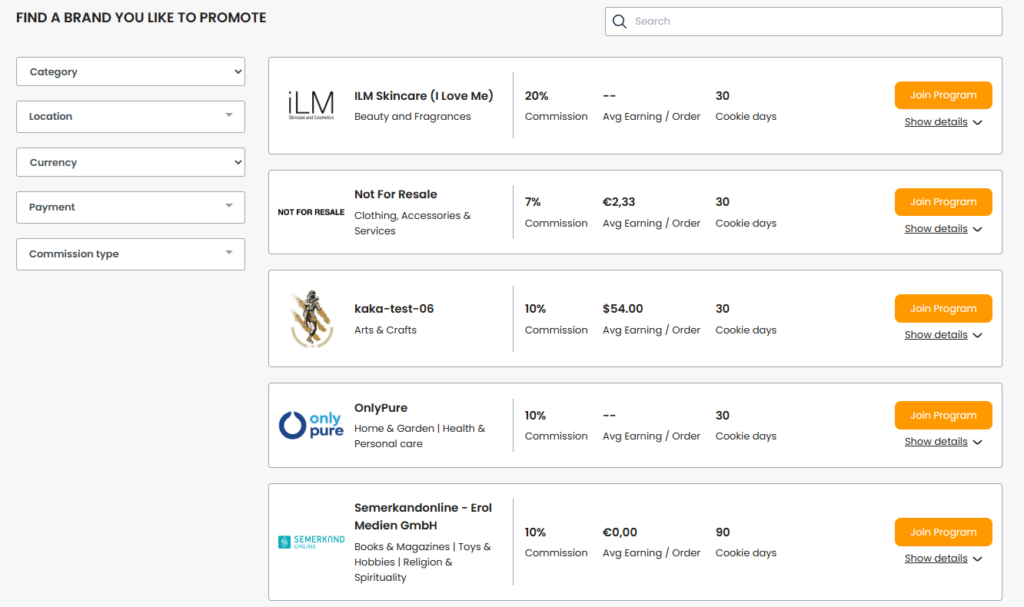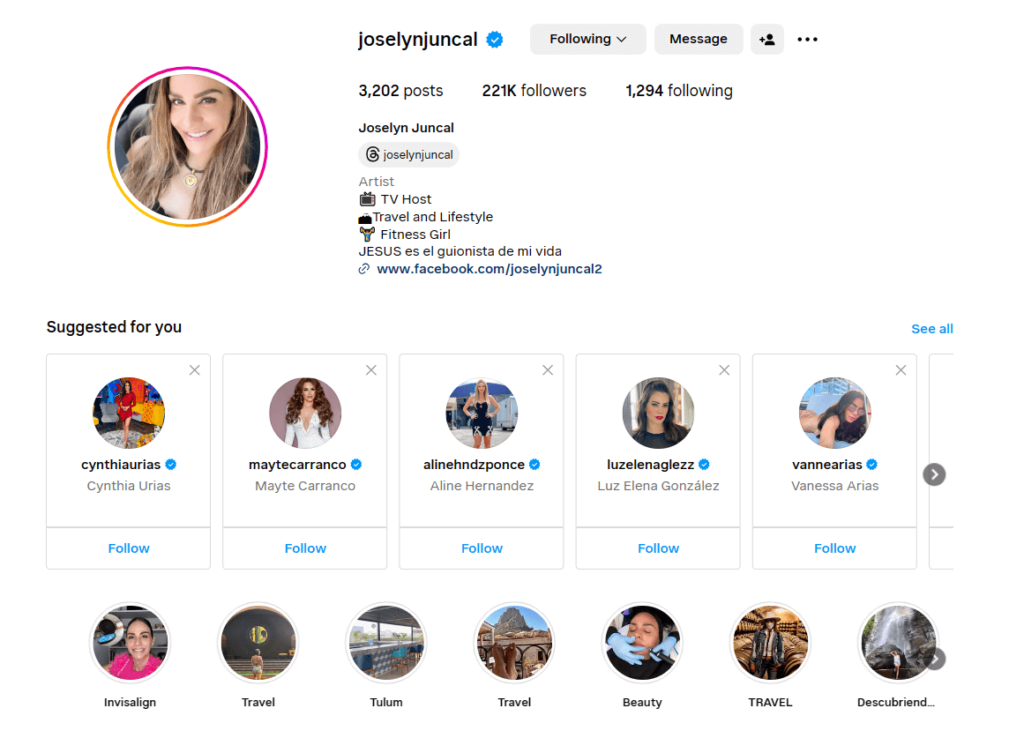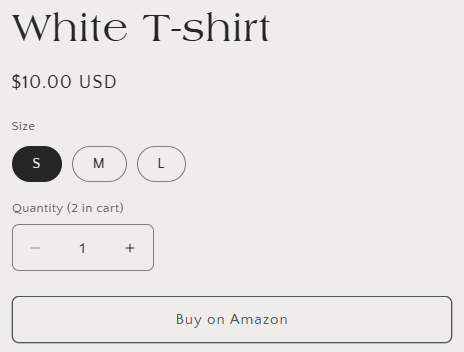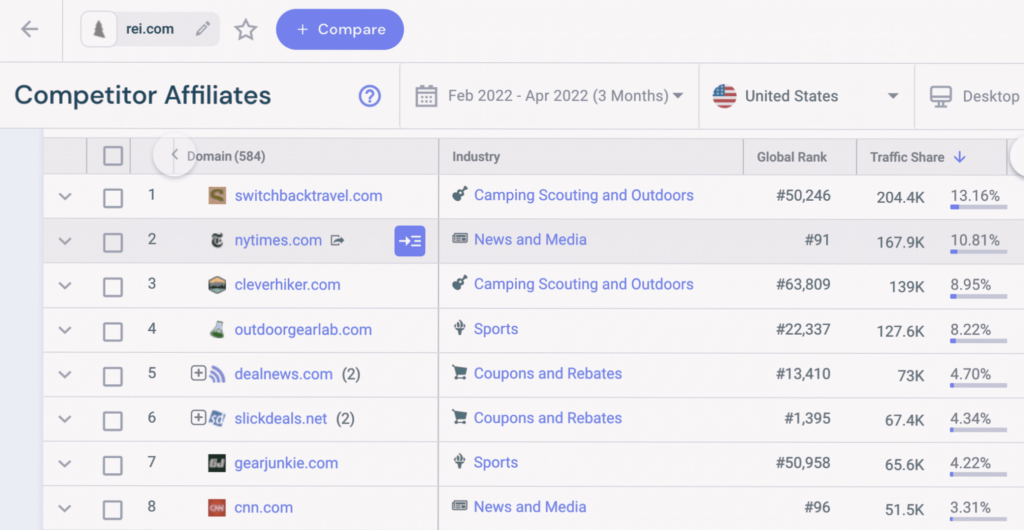You have already run an affiliate program, but there are no affiliates…
Don’t let your affiliate program be an empty house. According to Rakuten Marketing, affiliate marketing contributed to 16% of all online orders in North America in 2019, which equals a potential 19% revenue gain after launching an affiliate program.
So, let’s power up your affiliate program with actionable ways to find your affiliate partners. Here are 9 methods:
- What you need to prepare before getting affiliates on board
- #01: Ask your existing customers
- #02: Join affiliate networks
- #03: Search on social media
- #04: Reach out to bloggers/websites within your niches
- #05: Invite other online stores to become your affiliates
- #06: Leverage your online image for passive affiliate recruitment
- #07: Steals affiliates from your competitors
- #08: Find affiliates on online forums and communities
- #09: Hire an affiliate recruitment agency
What you need to prepare before getting affiliates on board
Instead of spamming affiliate outreach, it’s more effective to focus on thoughtful partnership selection. Consider these two important aspects before searching for affiliates:
Expectation on affiliates
When setting expectations for your affiliates, keep these notions in mind:
- Quality Over Quantity: 20% of affiliates generate most of the revenue. Instead of reaching out to many, focus on finding someone relevant.
- Strategic Partnership: Each affiliate type carries different expectations. Some partners who are niche experts can yield exceptional conversion rates, some share your target demographic, which is beneficial in the long run.
Visualizing your perfect affiliates
Affiliate’s promotional methods need to align with your marketing strategy and brand image. So, it is better to identify exactly who you want to work with. Here are the main affiliate categories:
- Content Creators/Bloggers: Key opinion leaders with large followings.
- Online Businesses: Companies who share your target audience and are ready to associate with your brand.
- Affiliate Websites: Specializing in coupon distribution or product reviews/comparision to make money from affiliate marketing.
- Influencers: Marketers with significant online presence able to promote effectively through affiliate links.
Prepare necessary information
This step is often overlooked but crucial in securing valuable partnership. Clear information might not be the golden ticket to bagging affiliates, but giving them the wrong stuff could land you with a hard pass.
To reel in affiliates effectively, you’ve gotta give them the goods. Here’s what you need:
- Create outreach email template: This is the message for potential affiliates, including general information of the program: commission rate, promotional products, and further contact.
- Program Info Page: While not mandatory, this page serves as your sales pitch. It includes detailed information such as earning potential, testimonials from other affiliates, and support offered. An eye-catching visual is a big plus.
By understanding your ideal affiliates and providing them with all the necessary details, you can save yourself a ton of time while standing a better chance of snagging top-quality partners.
#01: Ask your loyal customers
You are most likely to recruit affiliate more affiliates when tapping into the brand’s loyal customer base. A study by Nielsen found that 72% of loyal customers were likely to recommend a brand to their social circle.
Do not have a loyal customer base? Launch a loyalty program using loyalty apps on Shopify!
Here are the reasons why loyal customers are more likely to be your affiliates.
- Your affiliate already likes your products, making them ideal for promoting your brand to their social circle.
- Skip the relationship-building phase.
- There’s no cost involved for affiliates
There are various ways to introduce your affiliate program. Typically, people do not emphasize it as they don’t want to pressure customers. Affiliate proposals often appear as supplementary information in regular communication.
Example: Consider emailing your most devoted customers, introducing your affiliate marketing program and showcasing the reward they could get.

The more engaged customers are with your brand, the better the timing for approaching them about becoming affiliates.
#02: Utilize passive approaches via your online appearance.
Tapping in the existing customer base is a great strategy to get more affiliates, but do not overlook other customers.
Some people might not be frequent shoppers (due to their low demand) but genuinely believe in your product’s saleability. They may impressed by the products, remember the brand, or even like your social accounts.
Some among many could be interested in being your partner. You can easily recruit them with minimal effort, but passively.
All you need to do is inform about affiliate programs on all platforms. But, more importantly, appealing content would be the key to success, including some aspects:
- Create a short copy of your program
- Setting up a dedicated affiliate program landing page
- Providing incentives like free e-books, checklists, templates, or exclusive discounts in exchange for email sign-ups.
Example: Notion’s landing page is not just stand out for its informativeness but also exceptional aesthetics. It’s truly impressive how they’ve executed every aspect of the page with such finesse.
Key takeaways to learn from Notion:
- A clear and concise walkthrough for affiliate program application.
- Details into potential earnings and affiliates perks.
- Meticulous attention to design, featuring iconic Notion drawings.

#03: Join affiliate networks
By joining an affiliate network, you have opportunities to both actively and passively recruit affiliates as these places are the intermediaries connecting different types of affiliates and merchants who are in demand.
There are two main ways to get more affiliates by being listed on affiliate networks
- Active recruitment: Surfing the affiliates lists of the networks.
- Passive recruitment: List your affiliate program on the network and wait for appliances.
From affiliate point-of-view, your program is set amidst of various program in your categories, just like this:

Some of the most renowned affiliate networks today are ShareASale, FlexOffers Rakuten.
In the first approach, you can reach out to affiliates actively via such networks. The most eminent affiliates are listed on the front page, but there are also many hidden gems. Find some profiles that match your affiliate standards and give them a try!
The second approach to recruit affiliates (passively) is to list your brand on such networks. However, please note that you have to compete with numerous brands in the niche, and some of them are much larger in scale compared to your companies. Therefore, make your program introduction readable and catchy – it will help to appeal to more quality affiliates.
#04: Search on social media
Having influencers in your affiliate army may change the power of the whole team. Their potential is looked for and desirable for any store owners.
Please note that you don’t need to always look for celebrities to cooperate with, there are many smaller influencer types to consider:
- Macro-Influencers (Between 100,000 and 1 million followers)
- Micro-Influencers (Between 10,000 and 100,000 followers
- Nano-Influencers (Fewer than 10,000 followers)
Using hashtags is the easiest tactic to find influencers on social media (e.g., Instagram or TikTok).
Here is our dedicated step-by-step guide for finding affiliates, taking Instagram as an example:
Step 01: Have a list of related Instagram hashtags
We can browse product-related content using hashtags. Here are the 03 main types of hashtags that you can use to look for affiliates:
- Products: to find people creating content using the same product segment of your brand.
- Brand hashtag: to find people who are promoting brands in your niche.
- Locations: to find influencers in your targeted regions.
Assumingly you have a Germany-based store that specifies sports apparel, here are example hashtags: #berlin #sportwear #adidas
To have more related tags, just use Chatgpt. In this example, my prompt is “Give me 20 Instagram tags that are related to sports apparel” and here is the answer.

Step 02: Searching for potential affiliates
Click on the “Search Button” on Instagram and type in one of the hashtags. Then, there will be some accounts that show great sportswear aesthetics with a decent amount of followers.
Check if they are aligned with your brand spirit and send an outreach message that you have prepared:
- Their content reach: Do they have a TikTok, Facebook, or even LinkedIn account? Are they even a real person? How many likes per post do they have? Do they run a reel’s content?
- Their promotion availability: Looking if they have ever promoted any brand in your niches? Does their content relate to your products?
It may seem like a lot of “checkings” for an affiliate. But please remember that they are influencers, which means they may bring more referrals than average (it’s true even with a nano-influencer). Plus, the potential to grow bigger, and maintain a strong bond with them will lead to.
You don’t need to do research with every single hashtag, as we will provide you pro-tip to find more potential influencers in the next step.
Step 03: Find more affiliates with recommended accounts
Click “Follow”, and then you will receive some user recommendations that will appear to share the same vibe as the current profile.
Select “See All” to view all of the profiles suggested. You can check out any of them to find more potential affiliates.

#05: Research affiliate websites with SEO tools
Many websites make money by listing various links and coupons.
putting affiliate links on their blog post. You can easily find it via the Google Search engine or, more advanced, paid SEO tools like SEMRush, Moz, and Ahrefs.
So, it is easy to identify affiliate websites in your niche.
Let’s see an example of how we find them
Step 01: Find websites in your niche
It is pretty easy today to find your targeted websites. You can search for a special webpage with certain content or simply check out a list of websites about your niche as there are a lot of people doing it right now.
Additionally, tools like Google Trends, Keyword Planner, or Ubersuggest can help discover more keyword ideas and variations.

Step 02: Check website traffic in-bulk
A quality affiliate often receives a decent amount of traffic, but many online websites may not generate any visits.
In this stage, you can utilize Ahrefs to find them. Similar tools such as SEMrush and Moz offer the same features.
- Enter the URL of the website you want to analyze in the search bar at the top of the Ahrefs dashboard.
- Once the website is loaded, you’ll see various metrics related to the website’s traffic. There is other information about backlink profiles, referring domains, and more.

Step 03: Reach out
As websites often leave their contact on the homepage, you can start emailing them immediately. Here are the things to include in the email:
- Require a product listing, especially in case they are listing products from the same categories but not yours.
- Require affiliate link inserts, especially if they have previously listed your product. They would love to add your link, as they can profit from it.
Tips: In many cases, the top pages of SERPs do not include you in their posts. Moreover, as they have high rankings, getting listed may require a listing fee. Therefore, we recommend expanding your email lists to websites with lower rankings to get more success chance.
#06: Invite other online stores to be your affiliate
Some stores sell affiliate products. To be more specific, they do list different types of products on the storefront and embed affiliate links into the “BUY NOW” button, which will direct buyers to another online store when they click.
A clear sign of an affiliate store is as below:

Merchants allow affiliate products to be listed in their stores for reasons. Here is why affiliate stores will accept your invitation:
- They need supplementary products or an enriched product line. For example: they
- They want to test a new line of products without risking inventory.
- They simply want more profits.
The acceptance chance is even higher for a unique product line. People always looking for something thing that enriches their stores.
Here is how we search for other stores that may share the same product segment:
Step 1: Compile a list of related products
More than anyone, you have a deep understanding of your product, and also the related and supplementary product lines.
If you are stuck on an idea, use an A.I chatbot will be a good start. In this case, we try out ChatGPT
Now you have a list of supporting products to start.
Step 2: Targeted searches using specific queries on Google
After making a list of supplementary products, you can start finding related stores.
You can simply type in queries searching for bloggers/ affiliate websites on Google and reach out to them. But, there are different Google different operators which are very helpful for finding websites.
- Site: specifies the targeted domain.
- Intext: ensures that the specified text is mentioned on the site.
- Inurl: targets words included in the URL.
- Intitle: targets words included in the title.
For example, you can use queries like intitle:”dog harness” intext:”powered by shopify” to look for potential partner on Shopify who sells dog harness.
Step 3: Check the shop and invite them
After thorough research on their product lines and monthly traffic, assess each shop. There are some signs indicating a higher success rate:
- if they also feature affiliate products
- if they exhibit responsive communication.
Tip 01: Some of them may ask you for a promotion exchange, which means you might also need to sell their product on your site. So, you might want to be open to this possibility.
Tip 02: Dropshipping stores operate in a manner where they sell products without needing to handle inventory. This aligns well with affiliate marketing, increasing the success rate in invitations.
#07: Reach out to affiliates of your competitors
This strategy involves convincing affiliates who are currently working with your competitors to partner with you instead.
Since you are in a competition to appeal marketers, it is necessary to give a better offering than your rival. It includes better terms, incentives, or benefits to affiliates in order to persuade them to switch their allegiance from one company to another.
To find out competitors’s best affiliates, you can simply check from which website they gain the most referral traffic. And SimilarWeb will help you with this.

Tools like SimilarWeb provide valuable insights for identifying and evaluating your competitors’ backlinks. Through the lens of competitive intelligence, their powerful feature showcases innovation to maintain market supremacy.
You can reach out to their article for a more details guide.
Among these backlinks, you might uncover potential affiliate opportunities worth pursuing.
- Offers high relevancy in identifying potential affiliates
- Enhances the scope of your search capabilities
- Significantly reduces manual effort.
Some drawbacks of this method:
- It is time-consuming
- Might be competitive as those affiliates have really been affiliated with your competitors
#08: Find affiliates on online forums and communities
Online forums, social media groups, and communities can be another fantastic place to find affiliates. There are 02 main types of communities you can find online:
- The community that understands your industry
- The community of affiliates (in various types)
It is recommended to prioritize industrial communities over general affiliates. Industrial affiliates are highly knowledgeable about the industry and often bring higher conversion rates.
For example, Facebook groups for moms are perfect if you are selling baby care products, while forums for entrepreneurs are perfect if you are selling business services.
There are some notes before joining an affiliate:
- Find a credible group – which usually has no spamming content. Not every affiliate group is quality, many of the ones are made by various merchants promoting their affiliate programs.
- Build relationships first. Instead, give them advice, talk about common interests, or help them out. Once you’ve made friends, they’ll be more likely to say yes to teaming up with you.
Why it’s good:
- You’ll find people who are a good fit for your products.
- Cost-free
Problems you might face:
- You can’t be sure if the people you meet will be good affiliates.
- If things don’t work out, it can be tough to end the relationship.
- It takes time to chat with people and build relationships.
#09: Subscribe to an affiliate recruitment services
If you’re looking for a way to start affiliate marketing without dedicating time and resources to the task, an affiliate agency might be just what you need.
An affiliated agency essentially runs your affiliate program for you, working with a portfolio of affiliates to promote your products. Not only can you relax and let somebody else find affiliates on your behalf, but all the negotiations, tracking, and measuring will be taken care of for you too.
Why it’s great:
- Save time and effort
- Best deal and best affiliates
- High support
Where it runs into problems:
- Can be costly
There are many agency and services providers that help you find affiliates with different independent levels.
For example, a fitness equipment company wanted to sell more stuff online, so they got help from a special company called an affiliate marketing agency. This agency looked for people online who could help sell the fitness stuff, like bloggers and famous social media people who talk about fitness. They talked to these people and made deals about how much money they’d get for selling the fitness equipment and how they’d promote it.
The agency kept helping these people, giving them advice on how to sell the stuff better and making sure everything was working well. Because of this help, the fitness equipment company got more people to buy their stuff online, and more people knew about their brand in the fitness world.